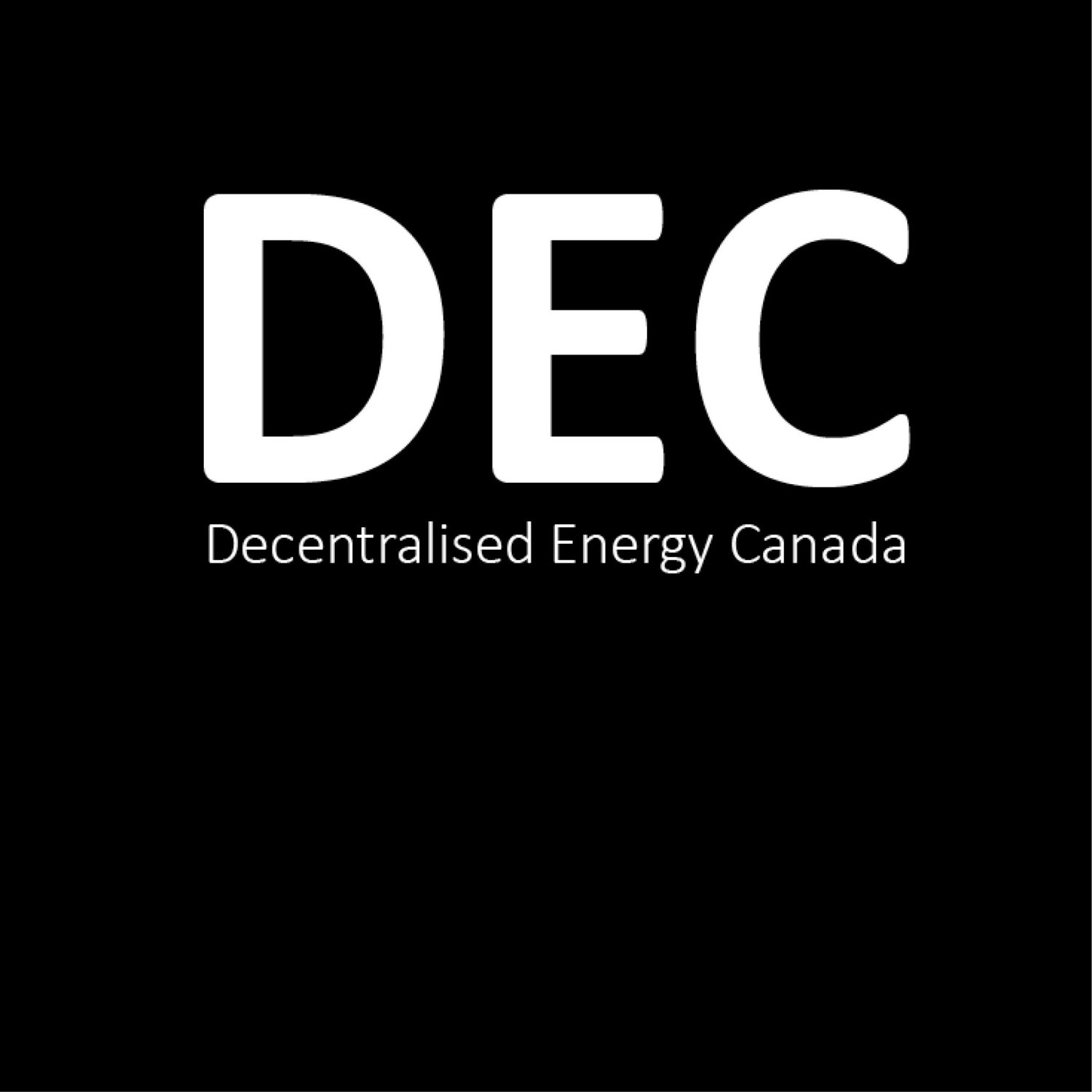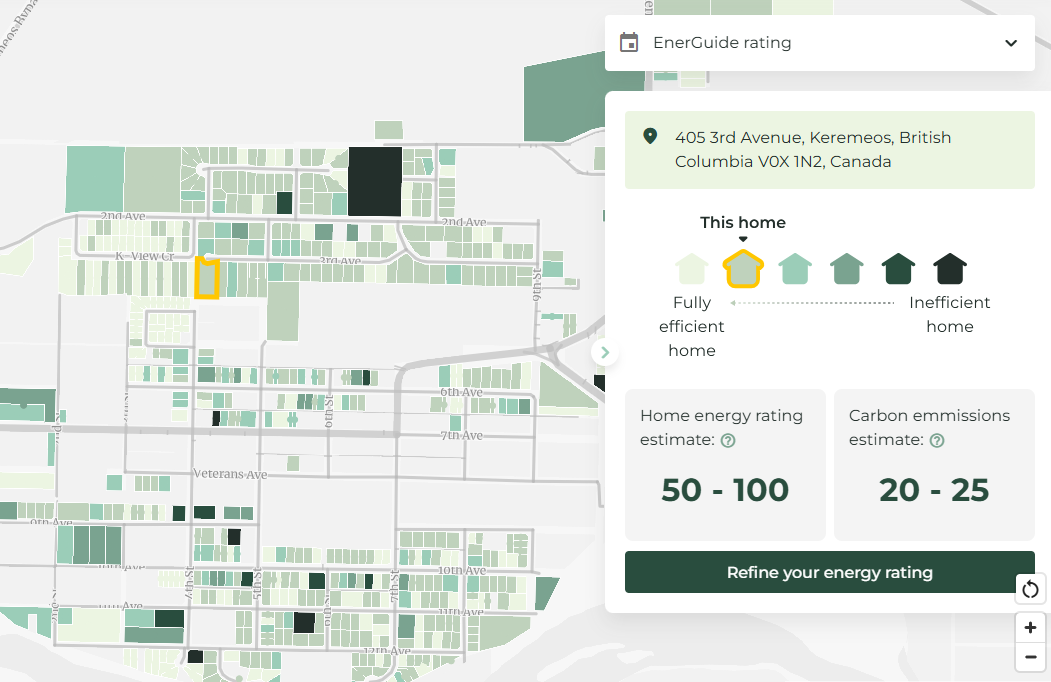Properate: Putting Smart, Equitable Energy Decisions in Every Homeowner’s Hands
Source: Patricia Faucher | · DEC · | April 2025
Founded in 2018, Properate is on a mission to make home energy efficiency simple, accessible, and scalable. The company was born out of a real need—getting clear, actionable upgrade advice into the hands of homeowners, contractors, and governments. Through easy-to-use digital tools like Homes, Maps, and Stride, Properate is helping Canadians understand how their homes use energy—and how to improve it. From virtual assessments to real-time insights, they’re making it easier for everyone to take meaningful steps toward net zero. Here’s our Q&A with Properate, where they share the story behind their work, the tools they’ve developed, and how their platform supports the shift to decentralised energy by empowering homeowners and communities with data-driven insights for smarter, more efficient upgrades.
When was your company founded? What inspired its creation?
Properate was founded in 2018 by Arman Mottaghi, a building science expert who saw a critical gap in energy efficiency assessments. While working on building envelope assessments, he realised that the current labour-intensive methods would never get us to net-zero by 2050. The biggest challenge lay in the residential sector, where homeowners lacked accessible data to guide their upgrades. This realisation led to the development of Properate and the creation of a tool to solve the problem.
Natural Resources Canada (NRCan) and certified energy auditors have done remarkable work, auditing over two million Canadian homes in the past two decades. However, with eight million homes still to go, it would take another 80 years and over $4 billion to reach them all using traditional methods. To accelerate the energy transition, we need a smarter, more scalable way to deliver actionable energy efficiency data to homeowners, contractors, and governments.
The biggest challenge lay in the residential sector, where homeowners lacked accessible data to guide their upgrades. This realisation led to the development of Properate.
Which provinces or regions have you worked in so far? Are there specific regions you’re targeting next? What challenges or opportunities have you encountered region to region?
We are currently active in British Columbia and are preparing to expand nationwide with the launch of our Stride tool. Regional differences in energy efficiency are quite substantial - from different energy costs and regulatory frameworks to diverse climatic conditions. There is no one-size-fits-all solution for energy efficiency and emissions reductions. That’s why it’s crucial to quickly and cost-effectively get the right information into the hands of those who need it most.
Can you explain how Properate uses machine learning and building science to simplify the switch to net-zero?
Properate’s ‘Homes’ virtual energy rating platform leverages publicly available data to estimate a home’s components. We run those components through a modelling based on NRCan’s EnerGuide labelling generating a result that is auditable, comparable, and accessible. Homeowners can verify the assumptions made for their homes and identify any differences. They can compare the results to an EnerGuide label received before or after an audit, which avoids confusion in the marketplace. Unlike a machine learning-only approach, which skews results on the basis that most energy audits have been done in urban and median-higher income homes, Properate’s methodology ensures more accurate assessments for underserved communities, and is a more reliable report for all Canadians.
How can homeowners get a free energy upgrade plan just by providing their address and their issue at hand of, say, “high energy bills”? How does it work?
The more information we have on a home, the more accurate our assessment will be. In some provinces, we can access publicly available LIDAR databases that allow us to assess the building’s shape and roof structure. Our basic ‘Homes’ assessment uses the home’s square footage and the year it was built. For example, homes built in the 1960s typically have less insulation in walls, while in the 1980s, someone might even have put in a glass brick wall. To refine the assessment, homeowners can answer ten simple questions about past upgrades. We don’t want to recommend you replace your windows if you just did that five years ago! This approach ensures tailored, practical energy-saving recommendations.
There is no one-size-fits-all solution for emissions reductions and home upgrades. That’s why it’s crucial to quickly and cost-effectively get the right information into the hands of those who need it most.
How does your platform help governments and utilities meet their energy rebate program targets?
It may be surprising, but governments don’t have a clear picture of what’s currently in people’s homes. Would rebate or education programs look different if policymakers knew that insulating ceilings was the most cost-effective way to reduce energy use? What if they had real-time data showing high heat pump adoption in one region, but low adoption in another? How would they conduct their outreach to a neighbourhood where electric baseboard heaters are common? Our platform provides accurate building component estimates, allowing governments and utilities to offer homeowners with free energy reports, while also identifying where their education and incentive efforts will have the greatest impact.
Your Homes and Maps applications enable virtual energy audits. How does this work and how does this approach make energy upgrades more equitable?
Propertate’s Homes tool gives every Canadian quick, easy, and affordable access to information about their home’s energy performance. In smaller and remote communities local energy auditors may not be available, meaning long travel distances and higher servicing costs. Other homeowners may not want to pay hundreds of dollars upfront just to understand which rebate(s) they may qualify for or what their next upgrade should be. By offering a quick questionnaire, we eliminate these barriers, making energy assessments accessible to everyone.
At the same time, we help drive demand for energy efficiency upgrades by equipping homeowners with clear, actionable recommendations. Our Maps tool is designed for governments and utilities, helping them to better understand where opportunities lie for energy improvements. This data-driven approach promotes equity, ensuring that underserved communities - those historically overlooked by previous energy programs - get the resources they need. Together, these tools enable community-wide retrofit programs, making energy upgrades more accessible, especially in remote and underserved areas.
Can you tell us more about Stride? How does it work for on-site energy assessments?
Stride uses LiDAR technology, a feature available on iPhone Pro and iPad Pro models that measures distances, to streamline home energy assessments. What once required expensive specialized equipment and significant time can now be done quickly and cost-effectively with smarter software. We can quickly generate a 3D model of a home, allowing HVAC contractors and energy auditors to input all the pictures and key details they need for their reports. Since the information is digitized from the start, it integrates directly with reporting software, eliminating offsite work and making reports instant.
By offering a quick questionnaire, we eliminate barriers, making energy assessments accessible to everyone.
In your opinion, what are the biggest challenges for homeowners when considering energy efficiency upgrades, and how do you address them?
The biggest barrier is information - many homeowners don’t know where to start, how much they could save, or what programs exist to help them. Through Homes and Stride, we reduce the time and cost required to obtain this information. While financial concerns are often listed as the biggest barrier, many homeowners aren’t aware of the annual savings, upfront rebates, and the low-interest loans available. By providing clear, actionable insights, we help homeowners see that energy efficiency upgrades can offer a strong return on investment.
What is Properate’s API-first approach, and how does it benefit partners looking to integrate your tools with their existing systems?
Properate is a social purpose company dedicated to helping Canadian homeowners achieve net zero. Rather than working in isolation, we want to share our tools with all who would benefit from them. We actively seek partnerships across the ecosystem to reduce barriers to adoption.
Properate’s methodology ensures more accurate assessments for underserved communities, and is a more reliable report for all Canadians.
- photo by Erik Mclean, St. John’s Newfoundland
Can you please share a success story or an example of how Properate transformed the energy upgrade decisions for a homeowner or a municipality?
The Regional District of Okanagan-Similkameen (RDOS) used our Homes and Maps tools to improve home energy efficiency across its municipalities. Through this program, Neil Campbell, a homeowner in the region, wanted to make energy efficiency upgrades but didn’t know where to begin. Properate provided the information through the program with RDOS to move forward on the path to net zero. His experience reflects our approach - as shown in a video here. The partnership between RDOS and Properate resulted in mapping the energy efficiency of 42,000 homes in under three months. It also streamlined access to trades while increasing homeowner engagement in energy upgrades.
Where do you see Properate in five years? How will you continue to innovate?
One of the biggest challenges we face is communication - ensuring homeowners have all the information they need to navigate their energy efficiency journey. As technology advances, decisions become more complicated, with smart load centres, energy storage, generation technologies, and heat pumps playing a bigger role in home energy management. Energy efficiency isn’t just about reducing costs in the winter anymore. Insulation in your attic, for example, makes your home more comfortable in the summer. Climate resiliency - the ability of homes to withstand and adapt to extreme weather events - is becoming increasingly more important as it will protect homes (and homeowners) from heat waves, smoke from wildfires, fires, and flooding. Our mission to provide accessible, data driven insights will become more important and take on more dimensions in the coming years.
We see residential homes as key players in Canada’s emissions reduction pathway, with the potential to generate, store, and use electricity more efficiently. Accelerating adoption is crucial, and there is no better organization to foster vital conversations than DEC.
We see residential homes as key players in Canada’s emissions reduction pathway, with the potential to generate, store, and use electricity more efficiently.
- graphic by Gary Kilian via freepik






